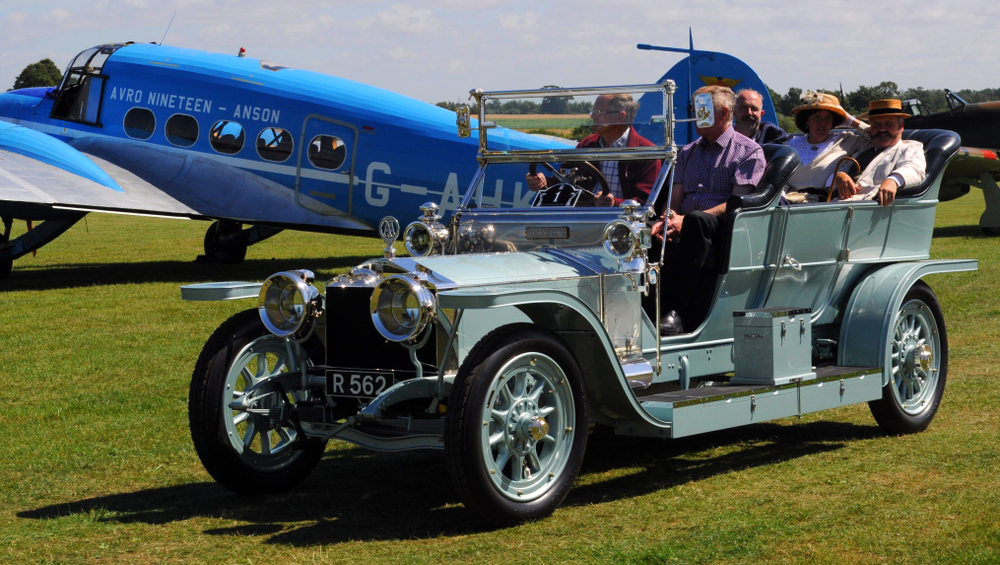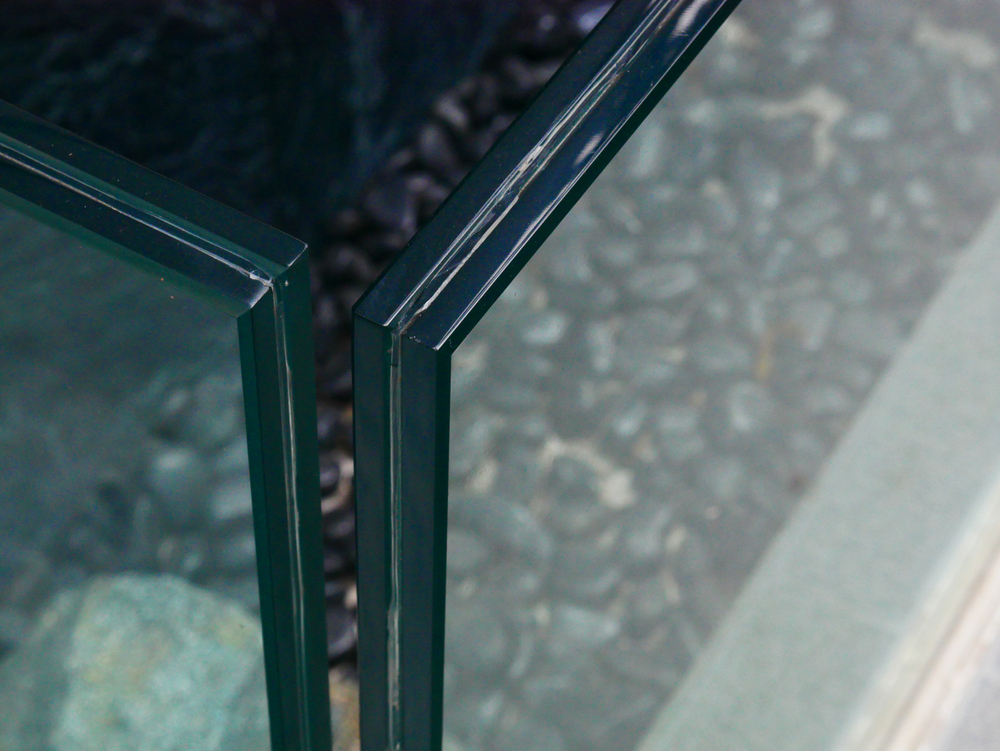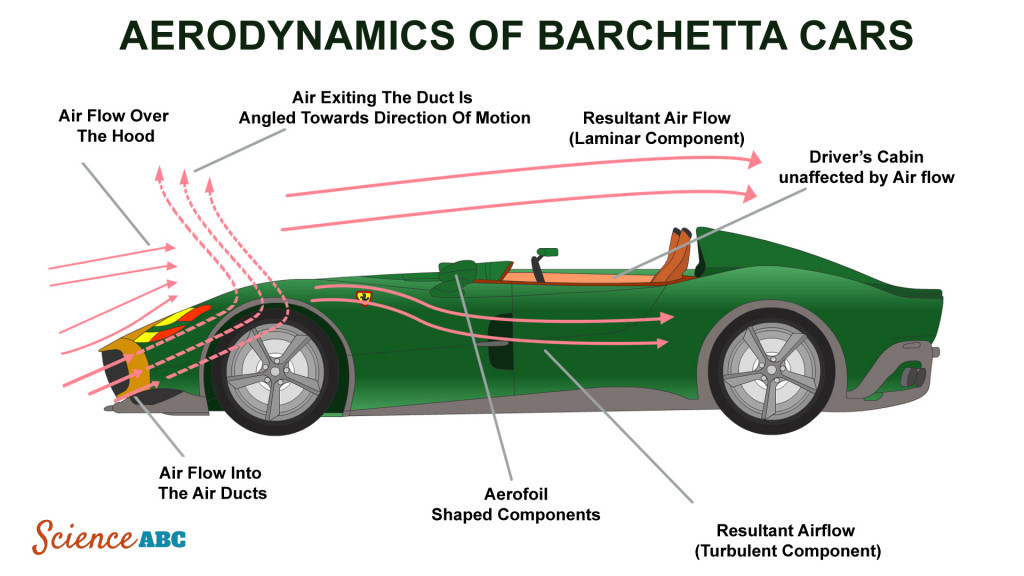Cars without windshields manipulate airflow using aerodynamic principles. However, these cars are not suited for everyday use.
We have been conditioned to visualize things in a certain way. For example, when imagining a smartphone, we think of a sleek cuboid unit with rounded edges, its silhouette broken only by a few slender buttons. Or, if visualizing an aircraft, the image of a central tube with protruding wings is the first thing to come to mind.
However, every now and then comes a design revolution that brings new concepts unlike anything ever seen. The result is outrageous designs; some are jaw dropping, while others are quite difficult to digest.
One such polarizing creation is the idea of cars without windshields!
Do Cars Without Windshields Exist?
The short answer? Yes!
Should they exist? Why not!

Like many other things on sale today, cars without windshields don’t look like items to which you would attach great utility. During their initial years, they were merely items of vanity, and still are for the most part. However, they do employ some science to make them drivable, as we shall enumerate further. However, let’s look into the need for windshields first.
Importance Of Windshields
Windshields have a very specific purpose—to keep wind and dust out of the occupants’ eyes. Surprisingly enough, windshields weren’t a mandatory part of cars when they first began selling. They were chiefly plate glass, sold as extras, rather than standard equipment.

Given that IC engines were in their infancy, they moved at lower speeds, and consequently dealt with less wind and dirt disturbing occupants. Plate glass was brittle, however, so it would break into large, sharp pieces upon impact, making it very unsafe for occupants. This led to the development of toughened and laminated glasses.
The former breaks into small, blunt bits upon impact and is used for windows. The latter are composed of a plastic interlayer between two sheets of glass. Upon impact, it breaks, but retains its structure due to the interlayer, keeping occupants safe.

Modern windshields are therefore made of laminated glass. In addition to keeping passengers safe from external elements, they serve two additional functions. First, they form a structural component of the car. This means that they share some force of impact in the case of an accident, along with other parts of the car’s skeleton. Second, they make the car more aerodynamic, reducing drag forces and improving fuel economy.
Also Read: Tempered Glass: Why Does It Break In Such Small Pieces?
Why Do Some Cars Have No Windshields?
If the windscreen plays so many roles, removing it from cars sounds like an engineering disaster, yet some of the most expensive and limited edition cars lack windshields.
The idea stems from Italian small boats called barchettas. The moniker also finds use in automotive parlance, where it represents open-top sports cars. The salient feature of barchetta-style cars is the absence of a full windshield; instead they have a small wind deflector to keep the driver somewhat safe from the elements.

Newer concepts have done away with the windshield altogether. In order to ensure passenger comfort and drivability, the body panels are designed to manipulate airflow over and around the cabin.
While this design has different proprietary names by various manufacturers, the underlying concept is the same.
Also Read: Why Are Concept Cars Never Actually Manufactured?
How Is Air Manipulated In Cars Without Windshields?
In old barchetta-style cars, it was advisable to use goggles or helmets with visors to protect oneself from the oncoming winds. However, modern barchettas are designed around airflow being manipulated at the front of the car using air ducts.

As a car moves forward, it cuts through the wind. Some part of this wind is channelized into the air duct, while the remaining flows over the hood (bonnet) of the car.
The air ducts are designed in such a way that they channelize air at high speeds, angling it to exit from the car’s bonnet. This angle is usually vertical, or towards the vehicle’s direction of travel, away from the driver. This air, exiting the duct, forms a barrier that is met by the high velocity airflow over the hood.

The result of this interaction is an airstream that flows over the driver’s head in a manner that is similar to the air flow over a windscreen. As this air reaches the cabin, it is further channelized through open channels that separate the turbulent component of air from the laminar component.
The turbulent component can cause buffeting or rapid up and down motion of the head. Due to this, it is directed away towards the driver’s chest, which is supported by the seat, whereas the laminar flow is directed over their head. The following illustrates the wind tunnel testing of a car without a windshield.

Barchettas are also equipped with spoilers that disrupt airflow in an otherwise high-pressure region to create low pressure. This improves airflow in the desired direction. Further, they have wings that help generate downforce to keep the car planted firmly on the ground at high speeds.
Also Read: How Can Bikers Go So Fast Without Getting Blown Off Their Bikes?
Practical Use
As cool as they may be, cars without windshields are a vulnerable entrapment for human beings. Their value lies in their vanity, and any development they may contribute in the realm of aerodynamics and fluid mechanics. This development, however, has potential to improve the design of mass-market cars in a manner that benefits end users.
Due to lack of conventional safety features, cars without windshields are barred on public roads in many countries. Hence, there is a small chance of you crossing their path anytime soon!
Also Read: Why Do Cars Undergo Wind Tunnel Testing?
How well do you understand the article above!

References (click to expand)
- Aerodynamics of High Performance Vehicles - IRJET. irjet.net
- Mohd Nizam Sudin, Mohd Azman Abdullah, Shamsul Anuar Shamsuddin, Faiz Redza Ramli, Musthafah Mohd Tahir - Review Of Research On Vehicles Aerodynamic Drag Reduction Methods - CiteSeerX
- McLaren Elva - Powerful Roadster & Lightest .... McLaren Automotive
